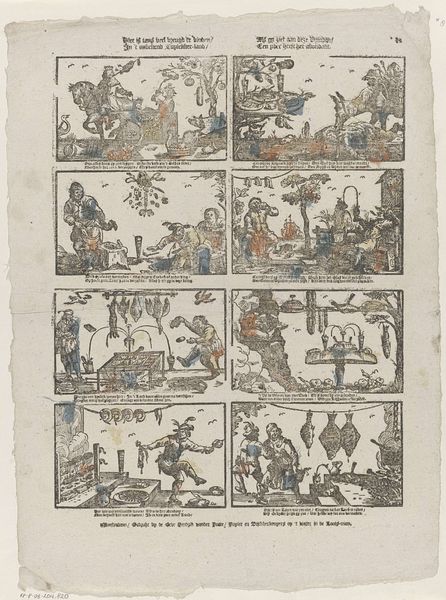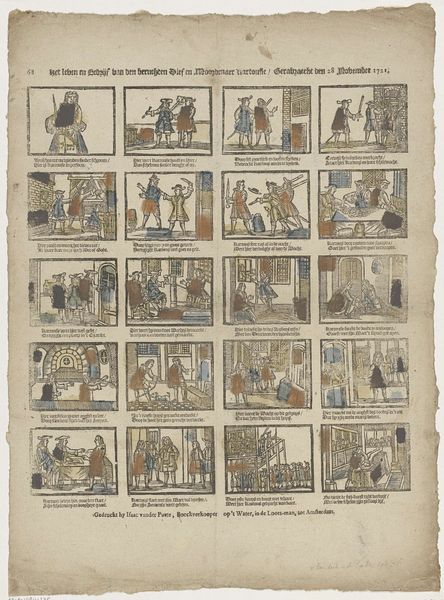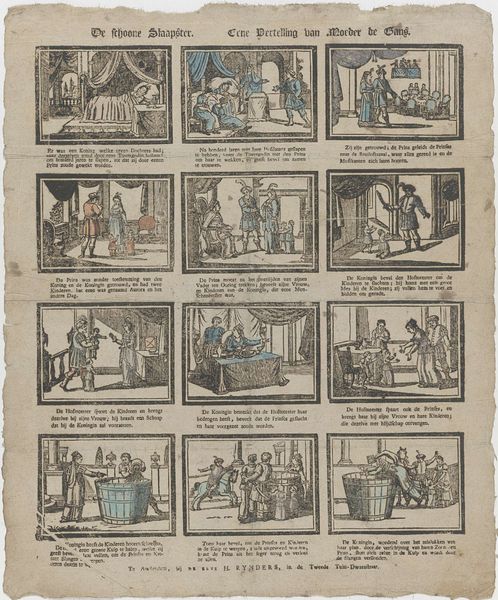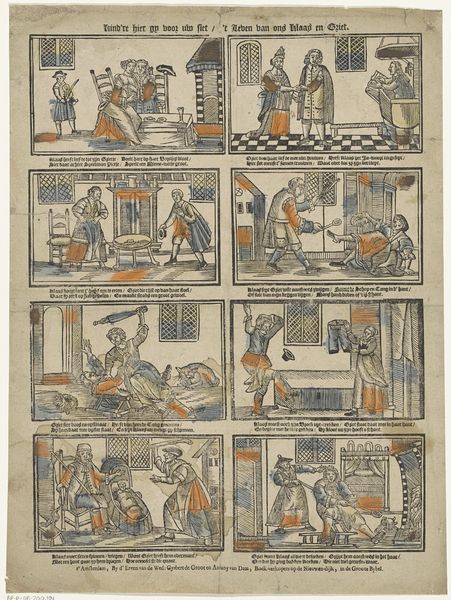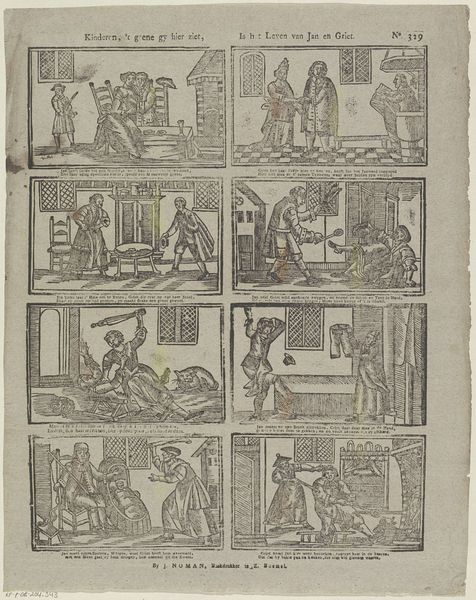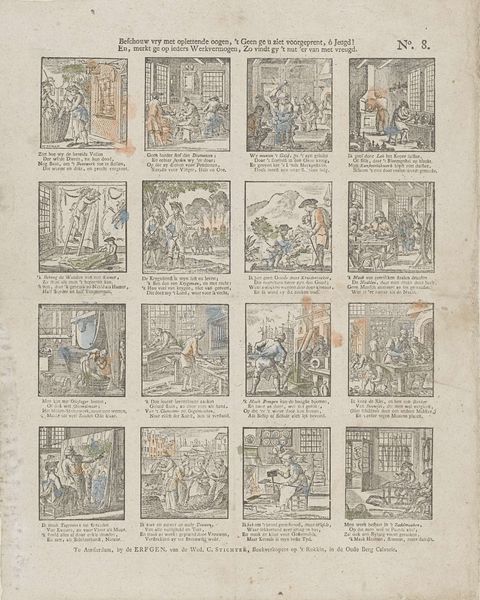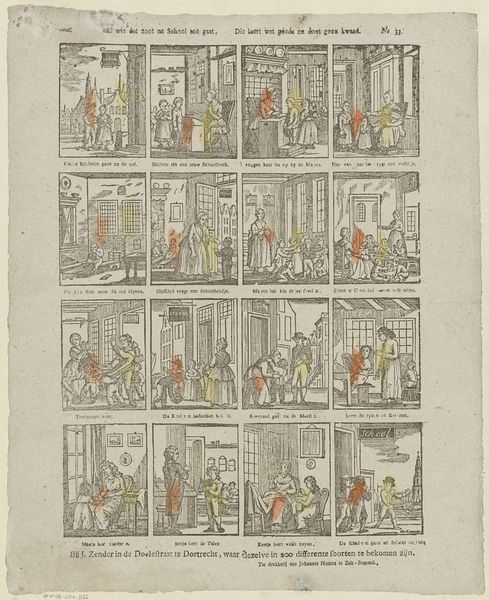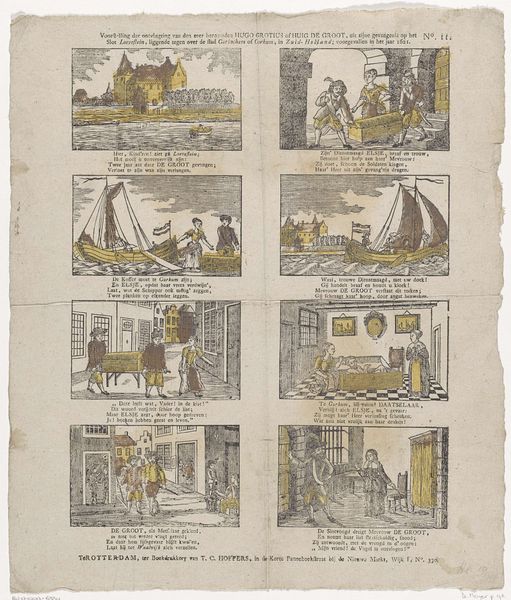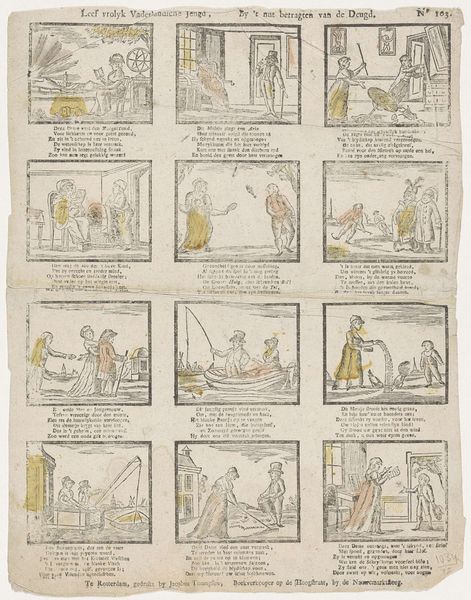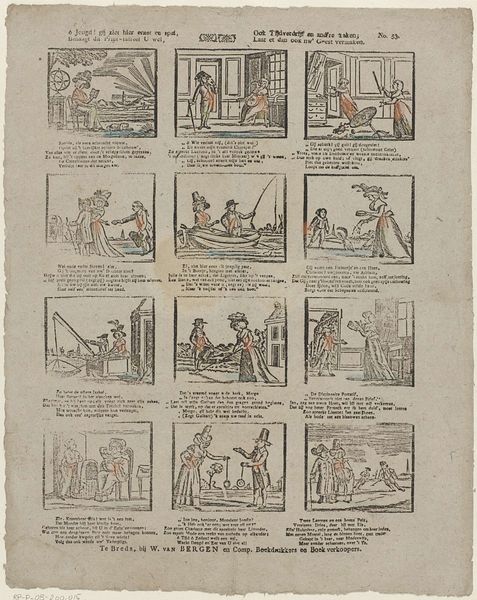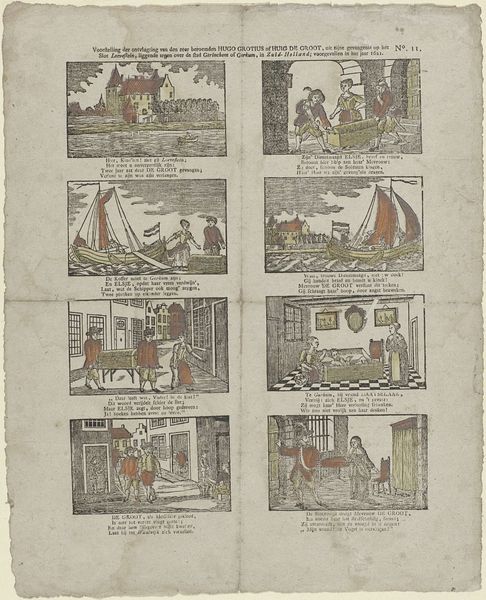
Kinders met groot vermaak hier ziet / Het leven van Jan met zijn Griet 1767 - 1793
0:00
0:00
ervenhendrikvanderputte
Rijksmuseum
print, paper, engraving
#
narrative-art
#
dutch-golden-age
# print
#
figuration
#
paper
#
line
#
genre-painting
#
engraving
Dimensions: height 383 mm, width 306 mm
Copyright: Rijks Museum: Open Domain
Curator: The artwork before us, entitled "Kinders met groot vermaak hier ziet / Het leven van Jan met zijn Griet," translates roughly to "Children with great delight see here / The life of Jan with his Griet." Created between 1767 and 1793, it’s attributed to the Erven Hendrik van der Putte, and is an engraving on paper. Editor: Whew, a mouthful! My first impression? This looks like a vintage comic strip gone slightly haywire. It has a naive, almost childlike quality despite, well, whatever mayhem seems to be unfolding in each little panel! There's a playful cruelty there I can't quite put my finger on... Curator: Indeed! These images fall under the category of narrative art and, more specifically, genre painting – depicting scenes from everyday life. Dutch Golden Age prints like this were widely circulated and offer insight into the period’s social mores, often portraying cautionary tales. Notice how the scenes are arranged, and how the characters are rendered in a distinctly linear style. It highlights the contrast between childhood innocence and adult experiences within the institution of marriage. Editor: Right, institution. A gentle euphemism given what I’m seeing! Is it just me, or do some of these panels hint at… domestic unrest? There’s one where Jan looks to be getting quite a walloping with some kind of wooden utensil from Griet...and is that a dog sneaking off from underfoot in another one? This isn't exactly heartwarming. More like a domestic obstacle course. Curator: That interpretation certainly isn’t without merit. Such works frequently reflected underlying societal tensions. It served as a moralizing reflection upon marriage in the 18th century, with both didactic messaging about societal norms and a certain humour. And to think, such visual prints had quite a social impact in a world prior to easily disseminated news or entertainment as we experience today. Editor: Impact, indeed! Looking closer, despite the potential moral undertones, I think people connected with the unpolished humanity splashed across the frames, the way people can often be caught somewhere between foolishness and hardship, humour and heartbreak all together. Curator: Yes, a visual document of sorts, and quite relevant for the study of how perceptions of daily existence circulated at that time. I now see more facets of it as we continued to dissect this print, how artistic intent combines with cultural norms in subtle visual ways. Editor: I couldn't agree more; diving in definitely softened my initial reading. Makes me want to search through the family attic a little!
Comments
No comments
Be the first to comment and join the conversation on the ultimate creative platform.
